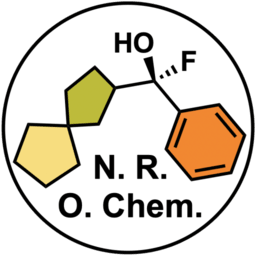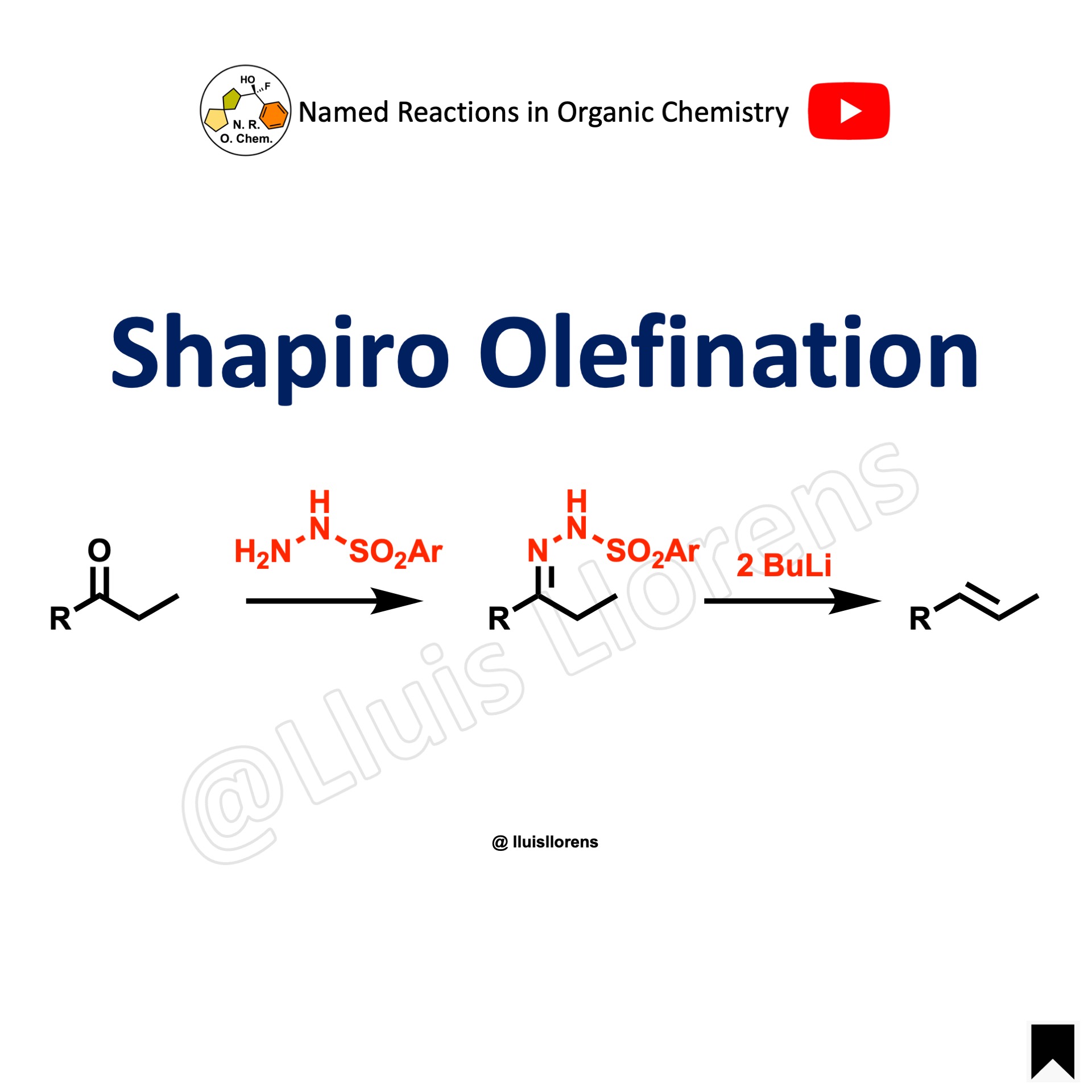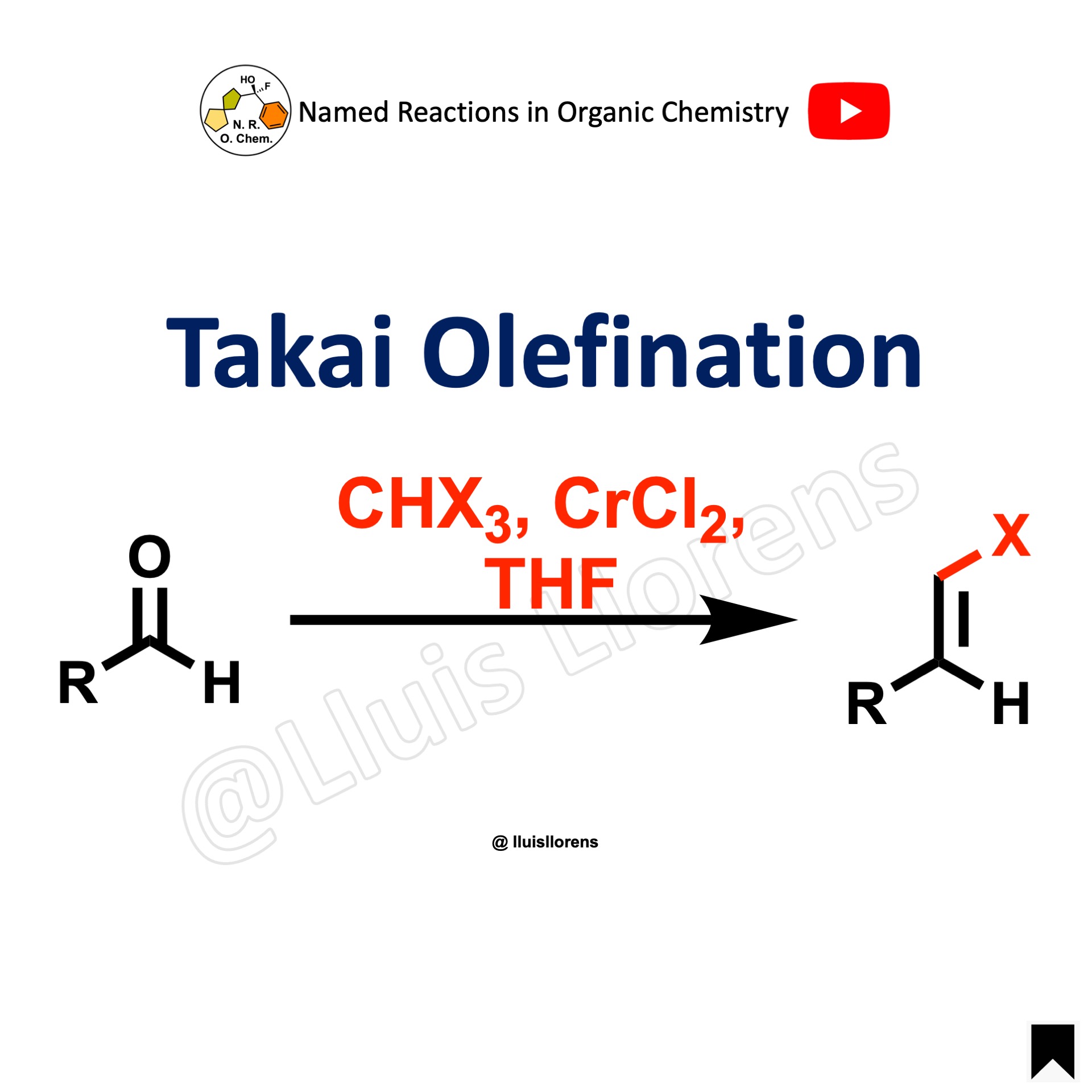The Wittig reaction involves the formation of C–C double bonds, olefins, from carbonyl compounds and phosphorous ylides. The phosphorous ylides can be prepared from a triaryl- or trialkylphosphine (e.g., triphenylphosphine) and an alkyl halide followed by deprotonation with a suitable base (RLi, NaH, NaOR, etc.).

- Phosphorous ylides are chemoselective, reacting faster with aldehydes than ketones (see example 4), and remaining intact in the presence of esters or amides (see example 3 and example 5).
- Many factors determine the stereoselectivity of the reaction. Generally, stabilized ylides, which have at least one strong electron-withdrawing group to stabilize the formal negative charge on the carbon, tend to deliver E-alkenes (see example 3), while non-stabilized ylides are prone to give Z-olefins (see example 2 and example 4).
- The Wittig reaction is often employed for the formation of terminal alkenes (see example 1 and example 5).
Reaction mechanism of Wittig reaction
Phosphorus ylides can be prepared from an alkyl halide and triphenylphosphine, followed by deprotonation with a suitable base (e.g., BuLi or potassium tert-butoxide). Then, nucleophilic addition leads to the formation of a betaine intermediate, which determines the stereoselectivity of the reaction. The cis-betaine will lead to the Z-alkene via an oxaphosphetane intermediate, while the trans-betaine will give the E-alkene. For more details on the reaction mechanism, see J. Am. Chem. Soc. 1986, 108, 7664 and Chem. Soc. Rev. 2013, 42, 6670.

Examples and experimental procedures of Wittig reactions
Example 5: J. Am. Chem. Soc. 2024, 146, 8456.

To a cold (0 °C), stirred suspension of [MePPh3]+Br- (1.5 equiv) in THF (36 mL) was added a solution of NaHMDS (0.94 M in THF, 1.4 equiv) via syringe. The resulting suspension was stirred for 1 h at 0 ºC. After this time, the reaction mixture was cooled (-15 ºC) and the aldehyde (5.99 mmol, 1.0 equiv) was added via syringe as solution in THF (15 mL). The resulting brown suspension was stirred for a further 30 min. After this time, the cold bath had warmed to -10 ºC, and starting material was consumed as monitored by TLC analysis. The reaction mixture was quenched by the addition of sat. aq. NH4Cl, transferred to a separatory funnel, and extracted with Et2O. The combined organic layers were dried over MgSO4, filtered, and the solvent was removed in vacuo. The crude product was purified via flash column chromatography.
Example 4: Nature Chem. 2022, 14, 450.

To a solution of the alkyl bromide (33.6 mmol, 1.0 equiv) in PhMe (67.1 mL), Ph3P (3.0 equiv) was added. After stirring at 100 ºC for 5 d (Note: the product isomerizes when heated higher than 110 ºC), a white solid precipitated out. The reaction mixture was cooled to 0 ºC. The resulting solid was filtered off, washed with hexanes, and dried under high-vacuum. This material was used in the next reaction without further purification.
To a solution of the phosphonium bromide salt (1.5 equiv) in THF (250 mL), n-BuLi (1.6 M in hexanes, 1.4 equiv) was added slowly. After stirring at room temperature for 1.5 h, a solution of the keto aldehyde (12.7 mmol, 1.0 equiv) in THF (127 mL) was added. After stirring at room temperature for an additional 1 h, the reaction mixture was quenched with sat. aq. NH4Cl and extracted with EtOAc. The organic phase was dried over Na2SO4 and concentrated under vacuum. The resulting residue was dissolved in a small amount of DCM and filtered through a silica gel plug. The organic solvents were concentrated under vacuum, and the crude residue was purified by flash column chromatography to afford the Z-alkene.
Example 3: Angew. Chem. Int. Ed. 2022, 61, e202200818.

To a solution of the aldehyde (3.7 mmol, 1.0 equiv) in dry DCM (20 mL), a solution of t-BuO2CCH=PPh3 (2.0 equiv) in dry DCM (20 mL) was added dropwise at 0 ºC. The resulting mixture was stirred for 2 h at the same temperature. The reaction mixture was quenched with aq. NH4Cl, and then the organic layer was washed with brine, dried over Na2SO4, and concentrated. The residue was purified by flash column chromatography to afford the E-product (78%) and the Z-isomer (6%).
Example 2: Angew. Chem. Int. Ed. 2022, 61, e202200818.

To a suspension of MeOCH2PPh3Cl (2.29 equiv) in dry THF (500 mL), t– BuOK (2.19 equiv) was added in portions at 0 ºC, and the resulting mixture was stirred for 20 min at the same temperature. After cooling to -20 ºC, a solution of the crude aldehyde (99 mmol, 1.0 equiv) in dry THF (100 mL) was added slowly, and stirring continued for 4 h at this temperature. The reaction mixture was quenched with aq. NH4Cl, and then THF was removed under vacuum. The resulting mixture was diluted with DCM, washed with water and brine, dried over Na2SO4, and concentrated. The residue was purified by flash column chromatography to afford the Z-alkene.
Example 1: J. Am. Chem. Soc. 2020, 142, 19487.

To a suspension of methyltriphenylphosphonium bromide (8.0 equiv) in anhydrous toluene (500 mL), n-BuLi (2.5 M in hexane, 7.5 equiv) was added dropwise at room temperature. The resulting mixture was stirred at the same temperature for 1 h.
The solution prepared above was added to a solution of the ketone (12.40 mmol, 1.0 equiv) in THF (150 mL) at 0 ºC using a syringe in a dropwise manner. The reaction mixture was stirred at 0 ºC for 30 min. Subsequently, the reaction mixture was quenched by the addition of sat. aq. NH4Cl, and the mixture was extracted with EtOAc. The combined organic layers were washed with brine and dried over Na2SO4. The solvent was removed under vacuum, and the residue was purified by flash column chromatography to afford the terminal alkene.
Videos about Wittig reaction
Images of Wittig reaction
Online database of named reactions
Browse named reactions in alphabetical order or by category in our online database of organic reactions.

















